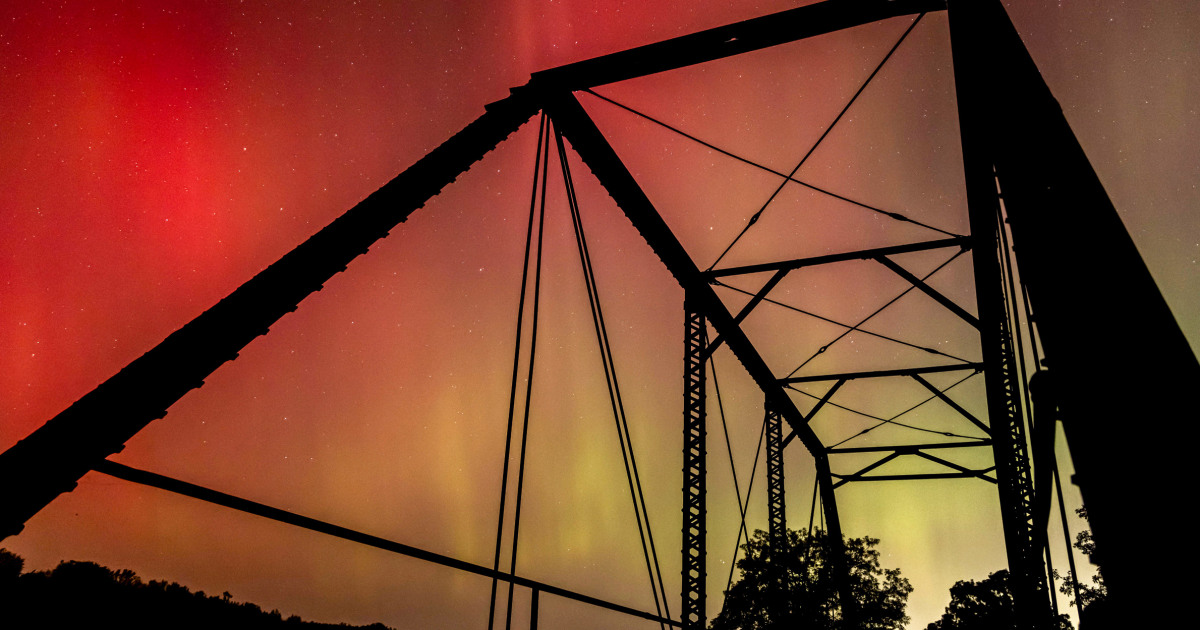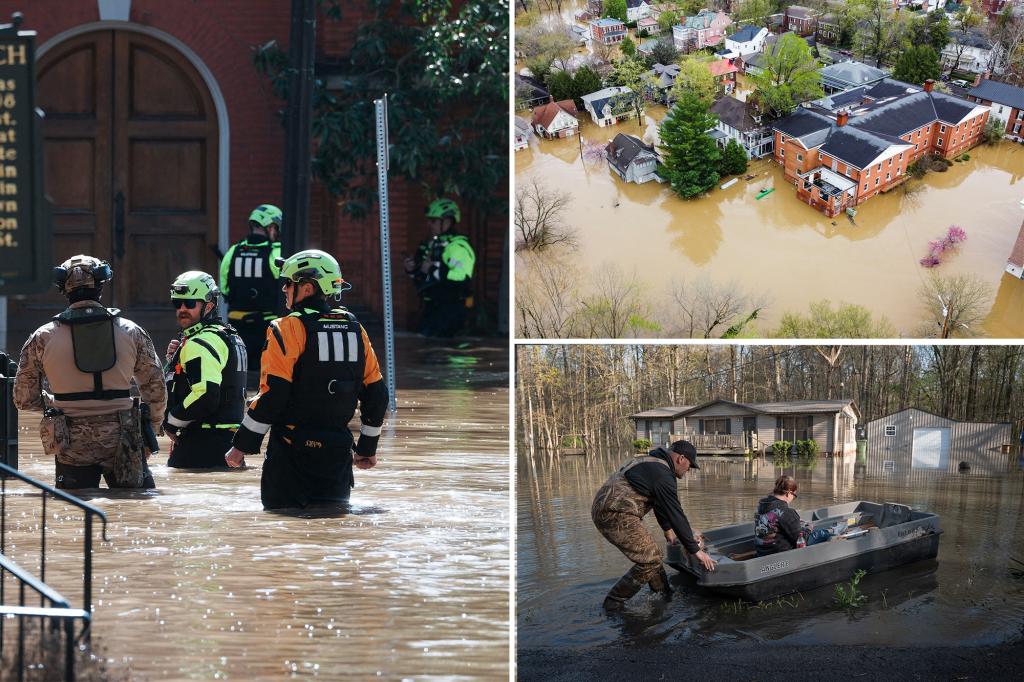Thanksgiving Magic: Will the Northern Lights Dazzle U.S. Skies This Year?
As Thanksgiving draws near, sky-watchers across the U.S. are hopeful for a rare spectacle: the northern lights, or aurora borealis, lighting up the skies. While the northern lights are typically associated with regions close to the Arctic Circle, the conditions for seeing this extraordinary natural phenomenon may align just in time for the holiday weekend. Experts are weighing in on the likelihood of this cosmic event, as well as what viewers can expect if they are lucky enough to witness the shimmering aurora.
What Are the Northern Lights?
The northern lights are a stunning natural light display predominantly seen in the high-latitude regions near the Arctic and Antarctic. The phenomenon occurs when charged particles from the sun collide with the Earth’s atmosphere, creating colorful bursts of light. These particles are funneled toward the Earth’s magnetic poles, where they interact with gases like oxygen and nitrogen, producing the iconic green, pink, and purple hues that characterize the auroras.
While the northern lights are most commonly observed in places like Norway, Sweden, and Canada, it’s not unheard of for them to be visible further south during periods of heightened solar activity, such as the upcoming Thanksgiving weekend.
The Solar Cycle and its Role in Aurora Visibility
The occurrence of the northern lights is strongly influenced by the 11-year solar cycle, which dictates the frequency and intensity of solar storms. These storms, which involve large bursts of solar wind and radiation, interact with the Earth’s magnetic field to create auroras. When solar activity is high, auroras can be visible at much lower latitudes than usual, sometimes even as far south as the U.S. mainland.
As of 2024, the Sun is nearing the peak of its solar cycle, which means that solar activity is ramping up, creating a greater chance for auroras to be visible in regions of the U.S. that are typically too far south to catch a glimpse. According to NASA, solar activity will continue to increase throughout 2024, providing a prime opportunity for sky-gazers to see the northern lights outside of their usual polar habitats.
What to Expect This Thanksgiving
With Thanksgiving approaching, experts are predicting a moderate to high chance of aurora sightings in the U.S., especially in northern regions. Strong solar flares and coronal mass ejections (CMEs) that occurred in the previous weeks could enhance the aurora’s visibility. These solar events are particularly important because they release massive amounts of solar wind, which can increase the likelihood of auroras appearing further south than usual.
According to Dr. Anne-Marie Huxley, an astrophysicist at the University of Alaska Fairbanks, the timing of the solar storms could align with optimal viewing conditions during the long Thanksgiving weekend, particularly in the northern tier of the U.S. “This is a rare opportunity for people in cities like Minneapolis, Chicago, or even parts of New York to witness a show that’s usually reserved for more northerly locations,” she explains.
Where to See the Northern Lights in the U.S.
If you’re hoping to catch a glimpse of the northern lights this Thanksgiving, the best chances are in the northernmost regions of the U.S. These areas are closer to the magnetic poles and, therefore, more likely to experience the auroras during periods of high solar activity. Some of the best places to see the northern lights in the U.S. include:
- Alaska – Known for frequent and spectacular aurora displays, Alaska remains the top destination for northern lights in the U.S.
- Upper Midwest – States like Minnesota, Wisconsin, and Michigan have a good chance of aurora sightings during solar storms, particularly away from city lights.
- Great Lakes Region – Northern parts of New York, Michigan, and even northern Ohio could see aurora displays on clear nights.
- New England – Maine, New Hampshire, and Vermont are potential spots for aurora sightings, especially if solar activity is particularly intense.
To maximize your chances of seeing the northern lights, it’s best to head to locations with minimal light pollution and clear skies. Check weather reports and aurora forecasts to find the best time and place to view the lights.
How to Prepare for Viewing the Northern Lights
Although the northern lights can appear suddenly, there are a few key steps that can help increase your chances of witnessing this phenomenon:
- Check Aurora Forecasts – Websites like NOAA’s Space Weather Prediction Center offer real-time aurora forecasts. These provide predictions about when solar activity will produce auroras and where they are most likely to be visible.
- Find a Dark Location – Light pollution is one of the biggest obstacles to aurora viewing. The darker the location, the better the chance of seeing the lights. National parks and remote areas are ideal.
- Dress Warmly – Since northern latitudes can be quite cold during late November, it’s essential to dress warmly. Layering with thermal clothing, hats, and gloves will help you stay comfortable during long stints of stargazing.
- Be Patient – Aurora displays can last anywhere from a few minutes to several hours, but their appearance can be unpredictable. Bring along snacks, hot drinks, and entertainment to pass the time while you wait for the auroras to appear.
Broader Implications: The Importance of Solar Activity Research
Beyond the awe-inspiring visual spectacle, the study of solar activity and auroras has significant implications for space weather forecasting. Understanding how solar flares and CMEs affect Earth’s atmosphere is crucial for protecting satellites, power grids, and communication systems. Space weather scientists monitor solar events closely to predict when geomagnetic storms might disrupt technological infrastructure on Earth.
For instance, a strong solar storm could damage satellites and GPS systems, which rely on stable communication signals. There’s also the potential for geomagnetic storms to interfere with power grids, causing blackouts or equipment malfunctions. This makes aurora monitoring not just a captivating scientific pursuit but also a vital part of modern infrastructure management.
Future of Northern Lights Viewing in the U.S.
As the solar cycle continues its upward trajectory, it’s likely that more U.S. residents will have the chance to see the northern lights in the years ahead. Researchers predict that the upcoming solar maximum, expected around 2025, could lead to even more frequent aurora sightings across the U.S., especially during periods of intense solar flare activity. This means that, although rare, the northern lights could become a more common feature of the U.S. night sky in the near future.
Conclusion: A Thanksgiving Surprise in the Sky
The upcoming Thanksgiving weekend may just offer an unexpected gift for sky-watchers: a chance to see the northern lights. Thanks to heightened solar activity, the spectacle could extend further south than usual, offering a rare opportunity for U.S. residents to witness this breathtaking display of nature’s beauty. Whether you’re in Alaska or the Great Lakes, be sure to check the aurora forecasts, find a dark spot, and prepare for what could be a truly magical Thanksgiving night under the stars.
For more information on solar activity and aurora forecasts, visit NOAA’s Space Weather Prediction Center or explore articles on space weather impacts at Space.com.
See more Your Daily Weather



